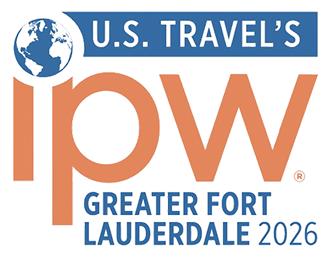- Región:
- USA
- Categoría:
- Tourism
International Travel to the U.S. Plummets as Experts Warn of Prolonged Decline
The United States is facing a steep decline in international tourism, with experts warning that the trend may continue well beyond the summer months. Cities like Buffalo, Las Vegas, and Los Angeles reported fewer foreign visitors this summer, signaling potential long-term effects on the nation’s travel industry.
Patrick Kaler, CEO of Visit Buffalo Niagara, described the situation: “To see the traffic drop off so significantly, especially because of rhetoric that can be changed, is so disheartening.” Despite a marketing campaign including a $500 gift card giveaway and the message “Buffalo Loves Canada,” the city’s traditional wave of Canadian tourists did not materialize this year.
In response to the shortfall from Canadian visitors, Buffalo’s tourism authorities have shifted their focus to Latin American markets, including Colombia, Argentina, and other less traditional sources of international travelers. Officials hope that by engaging these emerging markets, they can offset some of the decline and attract a new wave of tourists who may be eager to explore the city.
The World Travel & Tourism Council projected that the U.S. would be the only country among 184 studied to see a decrease in foreign visitor spending in 2025, calling it “a clear indicator that the global appeal of the U.S. is slipping.” Julia Simpson, the Council’s CEO, added: “While other nations are rolling out the welcome mat, the U.S. government is putting up the ‘closed’ sign.”
Travel research firm Tourism Economics forecasts an 8.2% drop in international arrivals next year, slightly better than the earlier prediction of 9.4%, but still well below pre-pandemic levels. The firm noted that “the sentiment drag has proven to be severe,” with airline bookings indicating that the slowdown of May, June, and July is likely to continue.
Deborah Friedland, managing director at Eisner Advisory Group, cited multiple headwinds: “Rising travel costs, political uncertainty, and ongoing geopolitical tensions have all contributed to the decline. Perception is reality.”
Some international events have already been impacted. Tena Morales, co-producer of the International Lindy Hop Championships in Harlem, reported that foreign competitors canceled plans to attend: “The climate is still the same, and what we’re hearing is still the same, that [dancers] don’t want to come here.”
Washington D.C. also reported a dip in international visitors, with local tourism officials projecting a 5.1% decline for the year. Destination DC announced a marketing campaign to counter negative perceptions by highlighting the city’s personal and welcoming side.
U.S. government data confirms a broader drop: more than 3 million overseas visitors, excluding travelers from Mexico and Canada, have stayed away during the first seven months of 2025, a 1.6% decrease compared to the previous year. Significant declines were seen from Europe, Asia, and Africa, although visitors from Argentina, Brazil, Italy, and Japan increased.
Jon Jarosh from Destination Door County, Wisconsin, offered a contrasting perspective: “A steady stream of loyal Midwest visitors helped deliver a strong summer for local businesses. Sidewalks were bustling, and restaurants were packed by midsummer.”
While some domestic tourism sectors have stabilized, the absence of foreign visitors in traditional gateways like Buffalo remains striking. Canada, historically the largest source of U.S. visitors, has sent fewer travelers this year, prompting local marketers to shift their focus to U.S. cities like Boston, Philadelphia, and Chicago.
Kaler concluded: “We will always welcome Canadians back when the time is right. They mean more to us than just dollar signs or transactions at our cash registers.”














